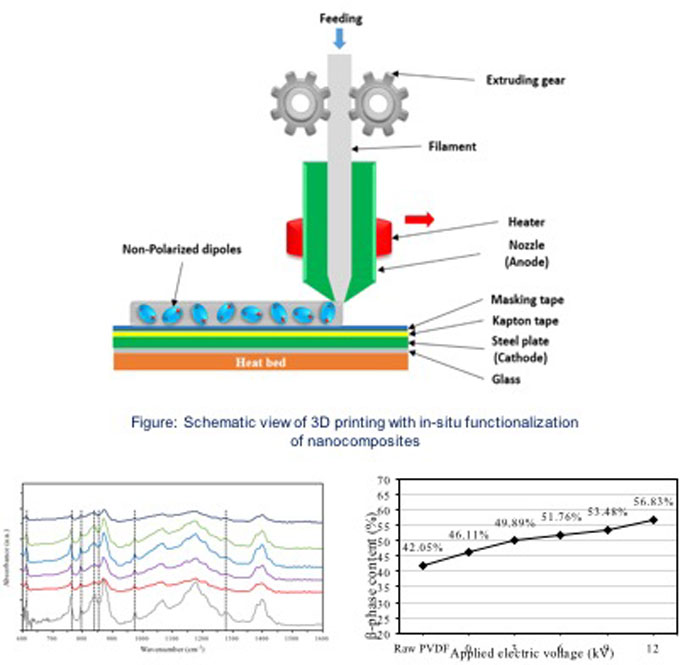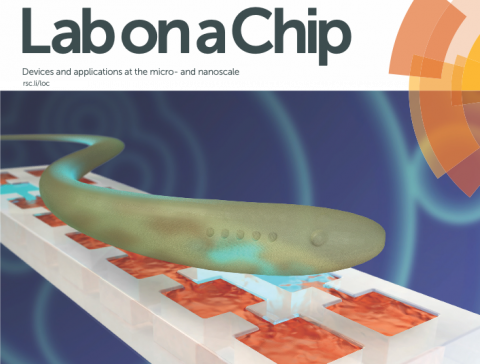 Neural tissue evolved 3.5 billion years after the origin of life, which is a testament to its complexity, and is found in almost all multicellular life, which is a testament to its importance. At the coarsest level of description, neurons are non-linear oscillators that when coupled together in tissue through excitatory and inhibitory connections give rise to complex spatio-temporal patterns that control musculature. Extrapolating from this general definition of a neuronal network, we reproduced the dynamics that produce the swimming of an eel on an abiologic reaction-diffusion platform.
Neural tissue evolved 3.5 billion years after the origin of life, which is a testament to its complexity, and is found in almost all multicellular life, which is a testament to its importance. At the coarsest level of description, neurons are non-linear oscillators that when coupled together in tissue through excitatory and inhibitory connections give rise to complex spatio-temporal patterns that control musculature. Extrapolating from this general definition of a neuronal network, we reproduced the dynamics that produce the swimming of an eel on an abiologic reaction-diffusion platform.

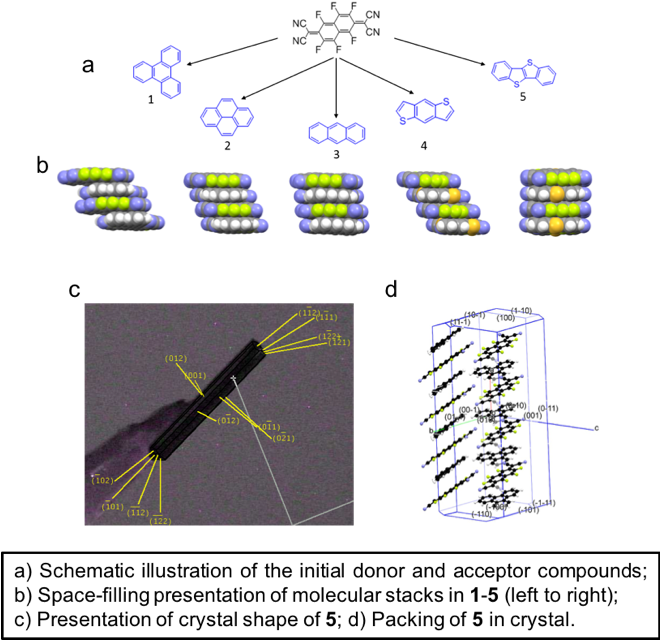 Charge transfer materials are important components of organic electronics for applications in OLED, solar batteries and transistors. Structure-properties relations for this series of materials, including shapes of their crystals, were studied experimentally and computationally in connection with their internal structure using X-ray diffraction. For binary donor-acceptor materials (a) structures formed by molecular stacks (b) were found. Experimental (c) and computational (d) studies demonstrated that molecular stacks are oriented along elongated direction of the crystals. These knowledge are important for design and fabrication of devices based on CT materials.
Charge transfer materials are important components of organic electronics for applications in OLED, solar batteries and transistors. Structure-properties relations for this series of materials, including shapes of their crystals, were studied experimentally and computationally in connection with their internal structure using X-ray diffraction. For binary donor-acceptor materials (a) structures formed by molecular stacks (b) were found. Experimental (c) and computational (d) studies demonstrated that molecular stacks are oriented along elongated direction of the crystals. These knowledge are important for design and fabrication of devices based on CT materials.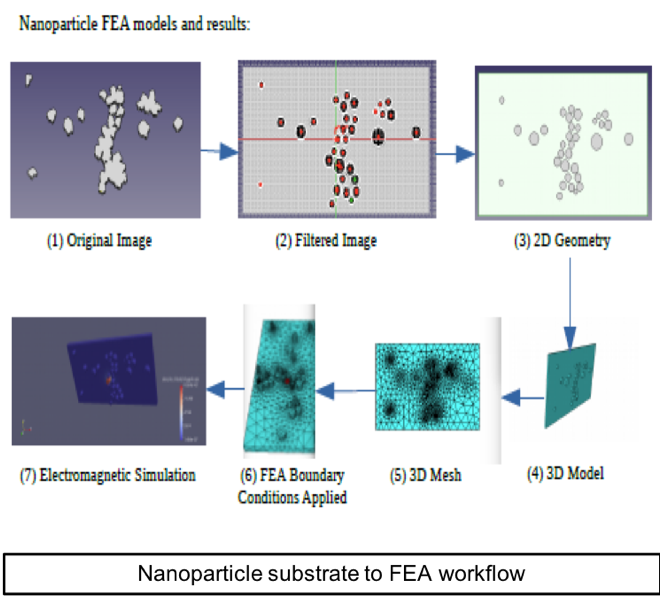 The finite difference-time domain (FDTD) models for clusters of known substrate nano-particle distributions were developed. Additional models utilizing open source finite element analysis (FEA) software (ELMER) and commercial FEA software (COMSOL) were also developed. These models will be used to validate the FDTD models. The interface provides for a much more robust visualization of the output for the nano-particle light/matter interactions.
The finite difference-time domain (FDTD) models for clusters of known substrate nano-particle distributions were developed. Additional models utilizing open source finite element analysis (FEA) software (ELMER) and commercial FEA software (COMSOL) were also developed. These models will be used to validate the FDTD models. The interface provides for a much more robust visualization of the output for the nano-particle light/matter interactions.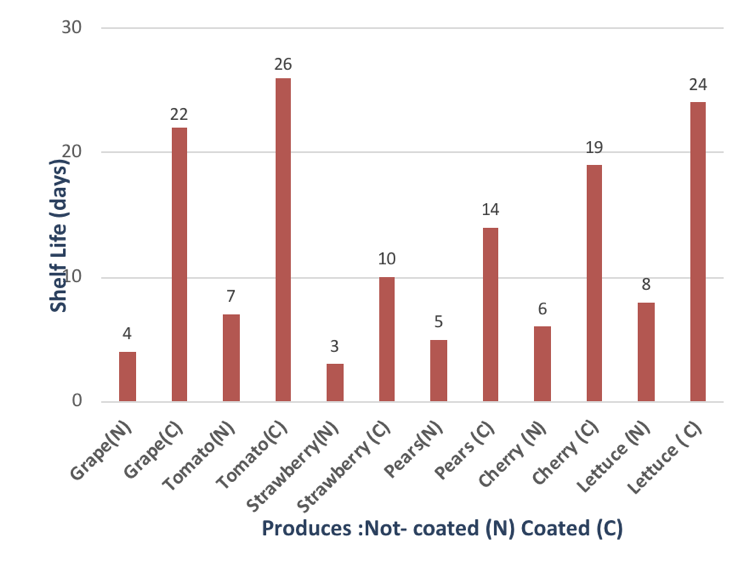 In previous work Texas State University team members discovered a self-assembling nanocomposite formed between polyvinylpyrrolidone and montmorillonite clay that exhibits high gas barrier properties. This self assembling phenomena has been extended to other polymers including polyvinyl alcohol, polyethylene oxide, and gum Arabic. It has additionally been demonstrated that coating fruits and vegetables with this self-assembling system extends the shelf life three fold ( figure 1). It appears that the shelf life extension is due to two factors. First the coating slows the egress of water and secondly the ingress of oxygen is drastically reduced. A patent has been applied for on this technology.
In previous work Texas State University team members discovered a self-assembling nanocomposite formed between polyvinylpyrrolidone and montmorillonite clay that exhibits high gas barrier properties. This self assembling phenomena has been extended to other polymers including polyvinyl alcohol, polyethylene oxide, and gum Arabic. It has additionally been demonstrated that coating fruits and vegetables with this self-assembling system extends the shelf life three fold ( figure 1). It appears that the shelf life extension is due to two factors. First the coating slows the egress of water and secondly the ingress of oxygen is drastically reduced. A patent has been applied for on this technology.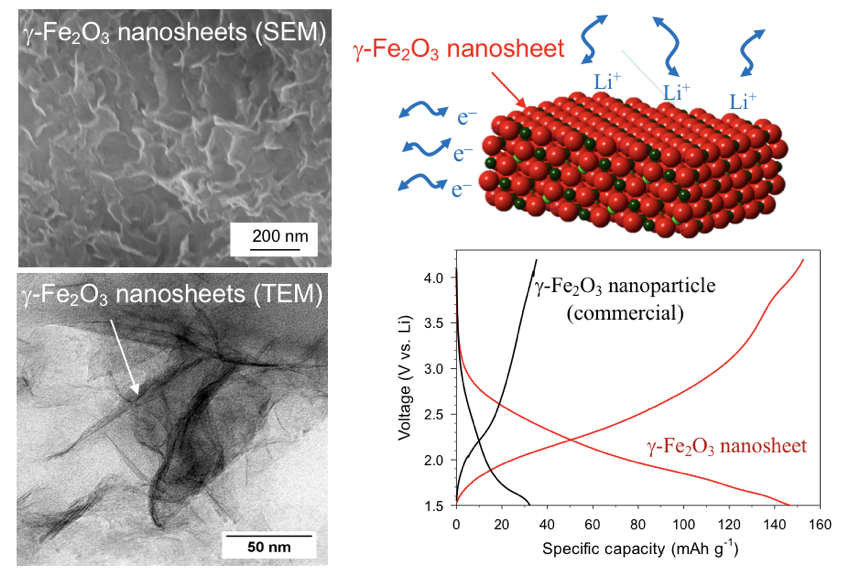 Research at Texas State University (MSI) and MSREC partner NC State demonstrated that iron oxide (g-Fe2O3) could be synthesized as a nanosheet architecture which resulted in significantly higher Li-ion capacities than nanoparticles; this work can provide enhanced cathodes for lower cost Li-ion batteries.
Research at Texas State University (MSI) and MSREC partner NC State demonstrated that iron oxide (g-Fe2O3) could be synthesized as a nanosheet architecture which resulted in significantly higher Li-ion capacities than nanoparticles; this work can provide enhanced cathodes for lower cost Li-ion batteries.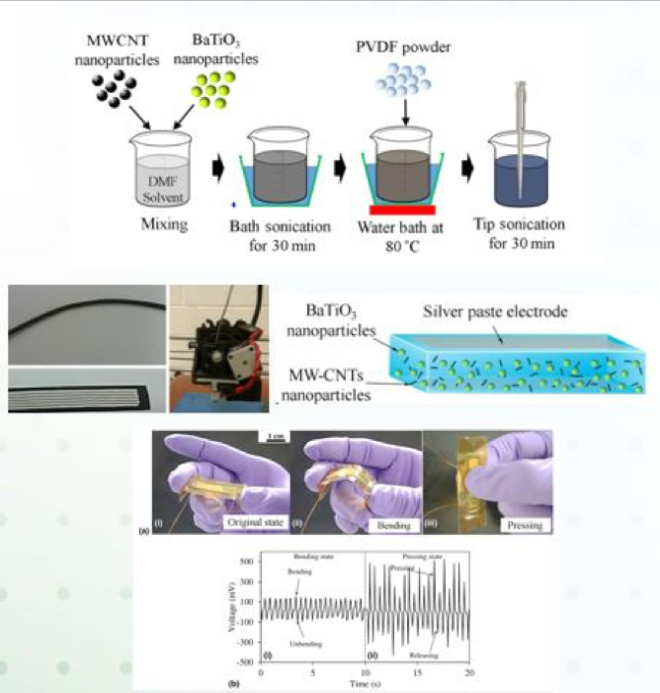 Piezoelectric materials have long been investigated due to their unique characteristic of converting mechanical stress into electrical charges or vice versa. However they are fragile, difficult to fabricate, and requires post processing. One way to alleviate the drawback is to use 3D printing with in-situ poling to fabricate piezoelectric materials in large scale and low cost fashion.
Piezoelectric materials have long been investigated due to their unique characteristic of converting mechanical stress into electrical charges or vice versa. However they are fragile, difficult to fabricate, and requires post processing. One way to alleviate the drawback is to use 3D printing with in-situ poling to fabricate piezoelectric materials in large scale and low cost fashion.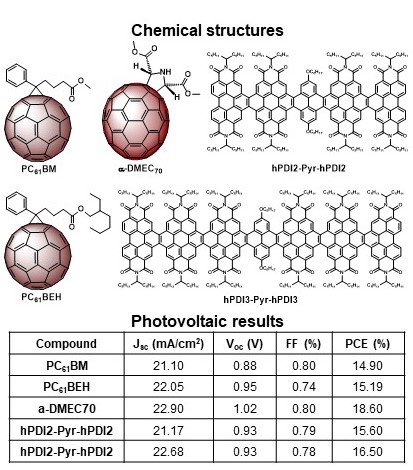 Perovskite solar cells (PSCs), have shown a remarkable increase in photoconversion efficiency (PCE), from 3.8% in 2009, to 22.1% in 2016. The good electron transporting and solution processable properties of fullerene derivatives make them the most popular electron transporting materials (ETMs) in PSCs. The influence of different adducts on the PCEs of fullerene-based PSCs has not been fully explored to date.
Perovskite solar cells (PSCs), have shown a remarkable increase in photoconversion efficiency (PCE), from 3.8% in 2009, to 22.1% in 2016. The good electron transporting and solution processable properties of fullerene derivatives make them the most popular electron transporting materials (ETMs) in PSCs. The influence of different adducts on the PCEs of fullerene-based PSCs has not been fully explored to date.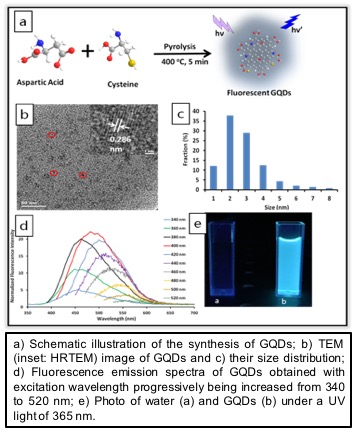

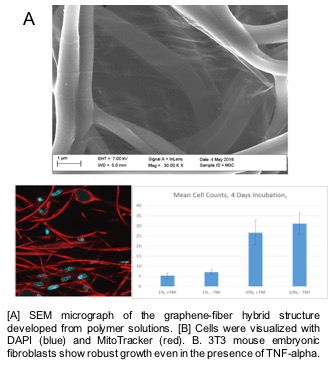
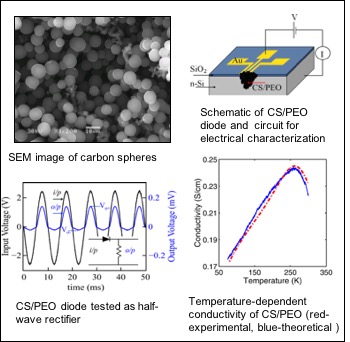 Intellectual Merit: Carbon-based materials have attracted scientific interest due to their promise to revolutionize the electronics industry. Carbon Spheres (CS) were produced via hydrothermal carbonization of sucrose. A Schottky diode was fabricated using a composite of the highly conductive CS and the polymer PEO (polyethylene oxide). The diode was tested as a half wave rectifier. The simple design and fabrication, and complete exposure of the carbon material to the ambient make these diodes excellent candidates for use in active electronic components including gas/light sensors.
Intellectual Merit: Carbon-based materials have attracted scientific interest due to their promise to revolutionize the electronics industry. Carbon Spheres (CS) were produced via hydrothermal carbonization of sucrose. A Schottky diode was fabricated using a composite of the highly conductive CS and the polymer PEO (polyethylene oxide). The diode was tested as a half wave rectifier. The simple design and fabrication, and complete exposure of the carbon material to the ambient make these diodes excellent candidates for use in active electronic components including gas/light sensors.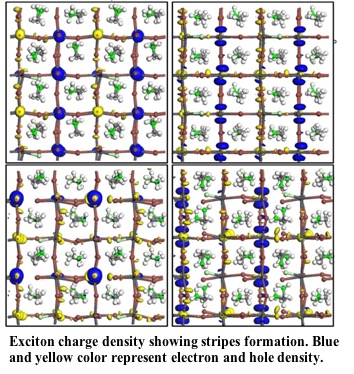
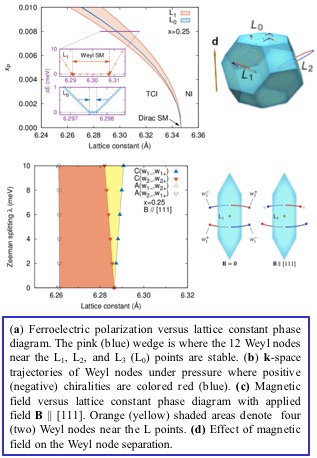 Outcome: In collaboration with experimental studies at Princeton University we have carried out ab initio calculations to examine the effect of pressure on the topological phase diagram of Pb1-xSnxTe. The calculations reveal that the ferroelectric polarization, which breaks crystal inversion symmetry, induces a Weyl semimetallic state separating the normal insulator and topological crystalline insulator phases. The metallic phase features pairs of Weyl nodes of opposite chiralities which persist over a finite pressure range. Hence the metallic phase is protected since the Weyl nodes cannot be removed except by mutual annihilation which occurs at higher pressure.
Outcome: In collaboration with experimental studies at Princeton University we have carried out ab initio calculations to examine the effect of pressure on the topological phase diagram of Pb1-xSnxTe. The calculations reveal that the ferroelectric polarization, which breaks crystal inversion symmetry, induces a Weyl semimetallic state separating the normal insulator and topological crystalline insulator phases. The metallic phase features pairs of Weyl nodes of opposite chiralities which persist over a finite pressure range. Hence the metallic phase is protected since the Weyl nodes cannot be removed except by mutual annihilation which occurs at higher pressure.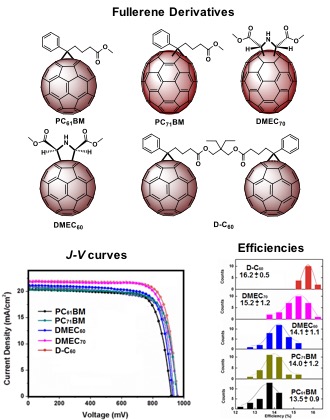 Perovskite solar cells (PSCs), have shown a remarkable increase in photoconversion efficiency (PCE), from 3.8% in 2009, to 22.1% in 2016. The good electron transporting and solution processable properties of fullerene derivatives make them the most popular electron transporting materials (ETMs) in PSCs. The influence of different adducts on the PCEs of fullerene-based PSCs has not been fully explored to date.
Perovskite solar cells (PSCs), have shown a remarkable increase in photoconversion efficiency (PCE), from 3.8% in 2009, to 22.1% in 2016. The good electron transporting and solution processable properties of fullerene derivatives make them the most popular electron transporting materials (ETMs) in PSCs. The influence of different adducts on the PCEs of fullerene-based PSCs has not been fully explored to date.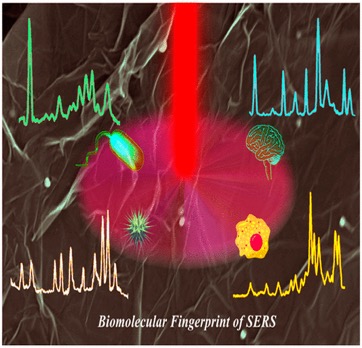 We have developed three-dimensional (3D) nanoachitecture based surface enhnaced Raman spectroscopy (SERS) technology and demonstrated that it can be used for the diagnosis of bacteria, virus, Alzheimer’s disease biomarkers, cancer, explosives and toxic chemicals.
We have developed three-dimensional (3D) nanoachitecture based surface enhnaced Raman spectroscopy (SERS) technology and demonstrated that it can be used for the diagnosis of bacteria, virus, Alzheimer’s disease biomarkers, cancer, explosives and toxic chemicals.